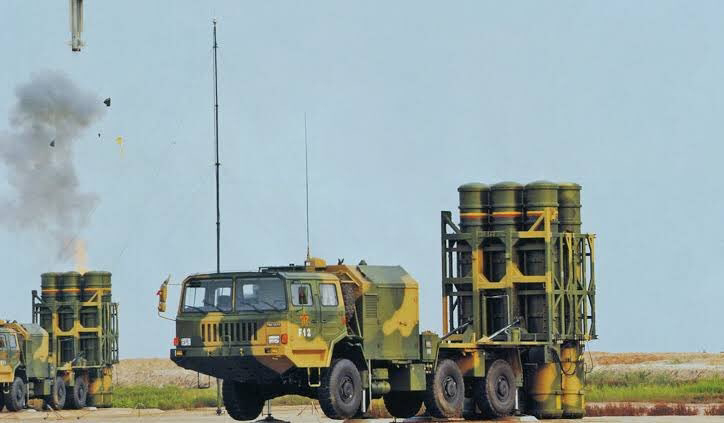Egypt Deploys China’s HQ-9B Air Defence System, Underscoring Cairo’s Strategic Pivot Away from Western Arms
Defence affairs analysis
HQ-9B
Egypt has officially begun operating China’s HQ-9B long-range air defence system, marking a seismic shift in Cairo’s decades-old reliance on Western military hardware.
The HQ-9B, developed by China Precision Machinery Import and Export Corporation (CPMIEC) under China Aerospace Science and Industry Corporation (CASIC), has been widely compared to Russia’s S-400 Triumf for its formidable range and multi-target engagement capability.
Confirmation of the deployment came from retired Egyptian Army Major General Samir Farag, who, during an interview with state television, lifted the lid on a move that is sending tremors through regional airpower balances.
In that televised interview, Farag disclosed that Egypt has integrated several cutting-edge systems, including the HQ-9B, describing it as a platform with capabilities comparable — and in some respects superior — to Russia’s S-400 Triumf and the U.S.-made Patriot PAC-3.
Cairo’s pivot towards China as a defence supplier under President Abdel Fattah el-Sisi reflects a clear strategy to reduce dependence on the United States and Europe, whose restrictive arms export policies have often left Egypt’s air force and missile arsenals technologically throttled.
The Egyptian military’s decision to embrace the HQ-9B sends an unambiguous message: Cairo intends to counterbalance regional threats, especially as tensions simmer with non-state actors and potential adversaries capable of deploying ballistic and cruise missile technologies.
Strategic analysts argue that the HQ-9B’s active phased-array radar, boasting a detection range beyond 300 kilometres, significantly bolsters Egypt’s integrated air defence network.
The system’s advanced radar and fire-control suite can simultaneously track dozens of targets, from fighter jets and low-observable aircraft to medium-range ballistic missiles (MRBMs) and cruise missiles, providing a robust multi-layered shield over critical national infrastructure.
Each HQ-9B battery typically features a high-performance radar, multiple transporter erector launchers (TELs) with up to eight launchers per unit, and a mobile command centre — a configuration that gives Cairo flexible coverage across vast swathes of Egyptian airspace.
The HQ-9B’s intercept envelope extends to altitudes from 500 metres up to 30 kilometres, with maximum engagement ranges reportedly reaching 260 kilometres, depending on the threat profile.
This makes it a credible counter to modern fighter threats and stand-off missile systems increasingly proliferating in the region.



Comments
Post a Comment